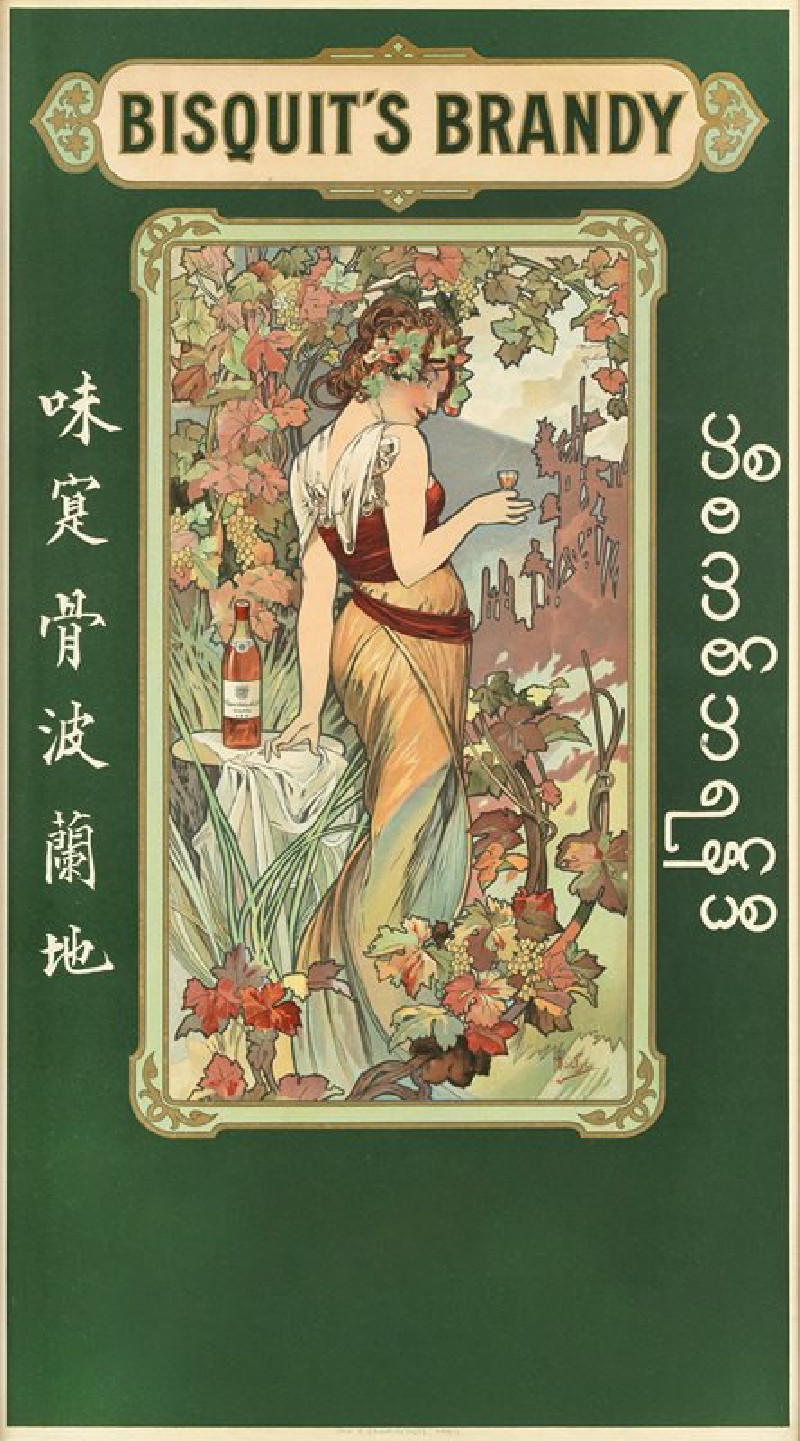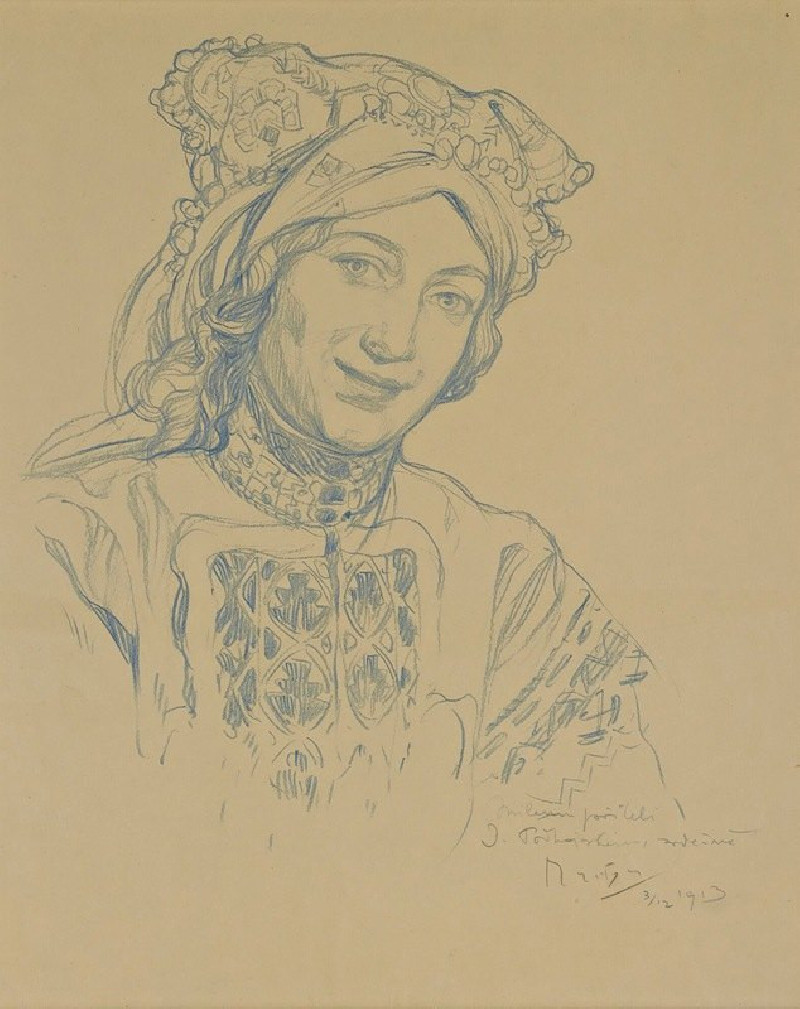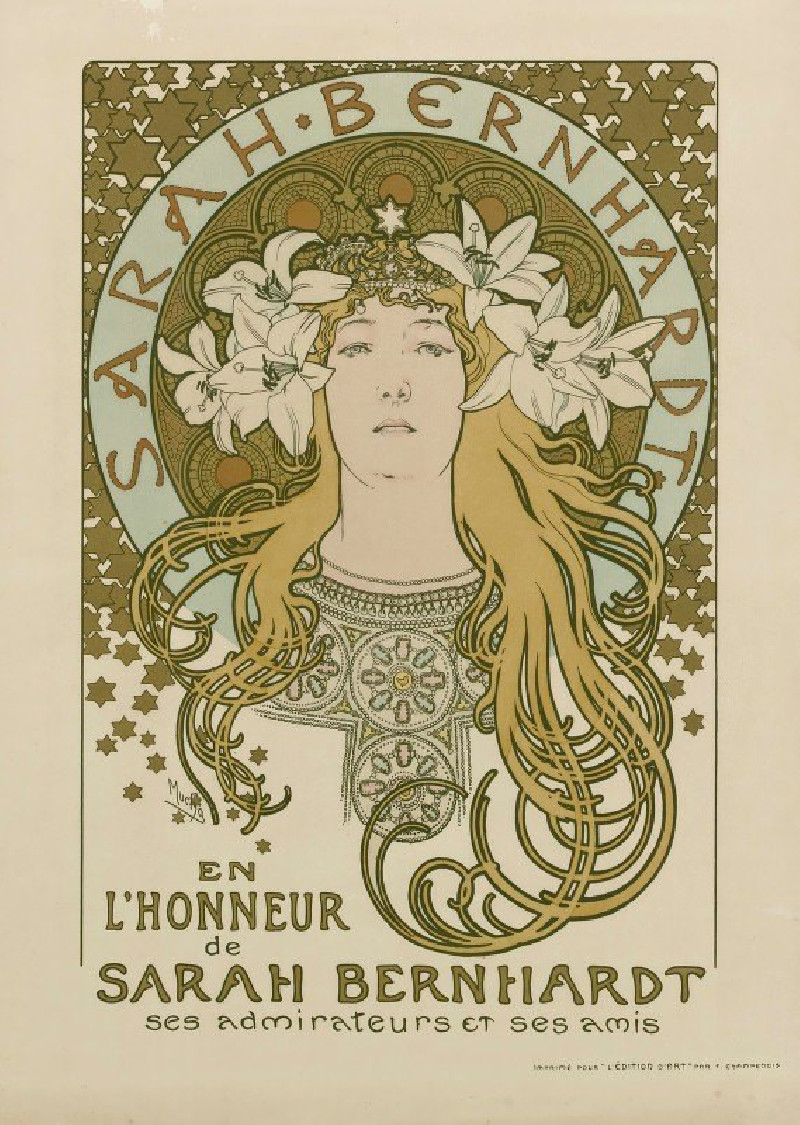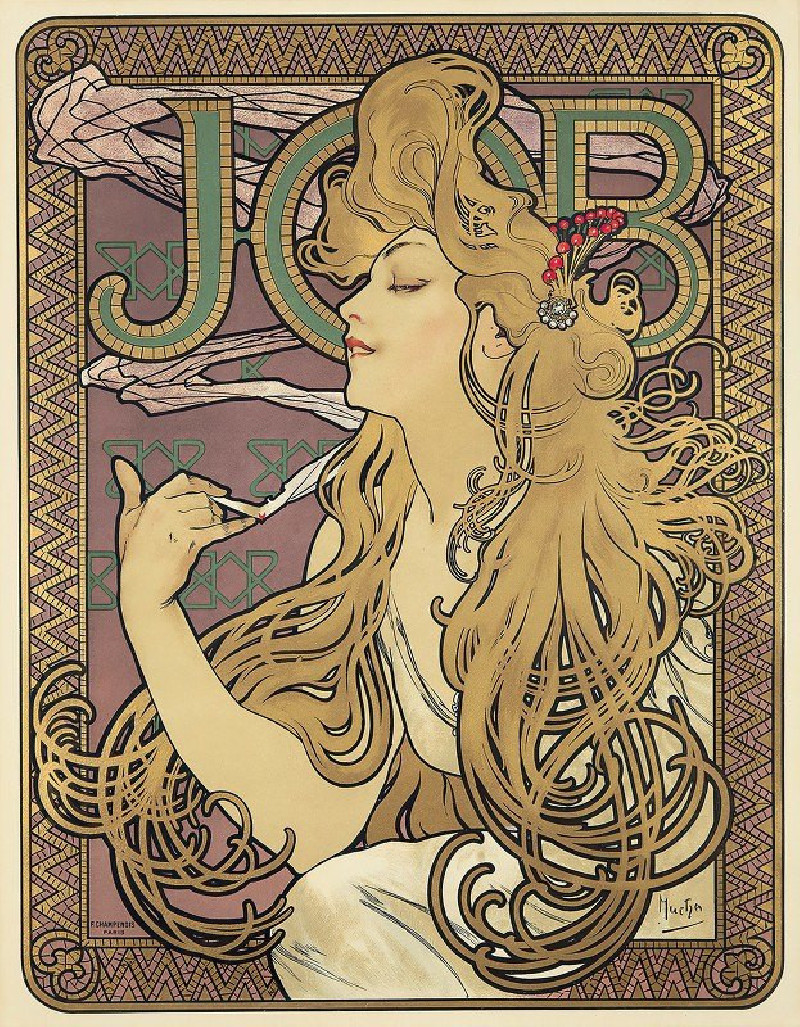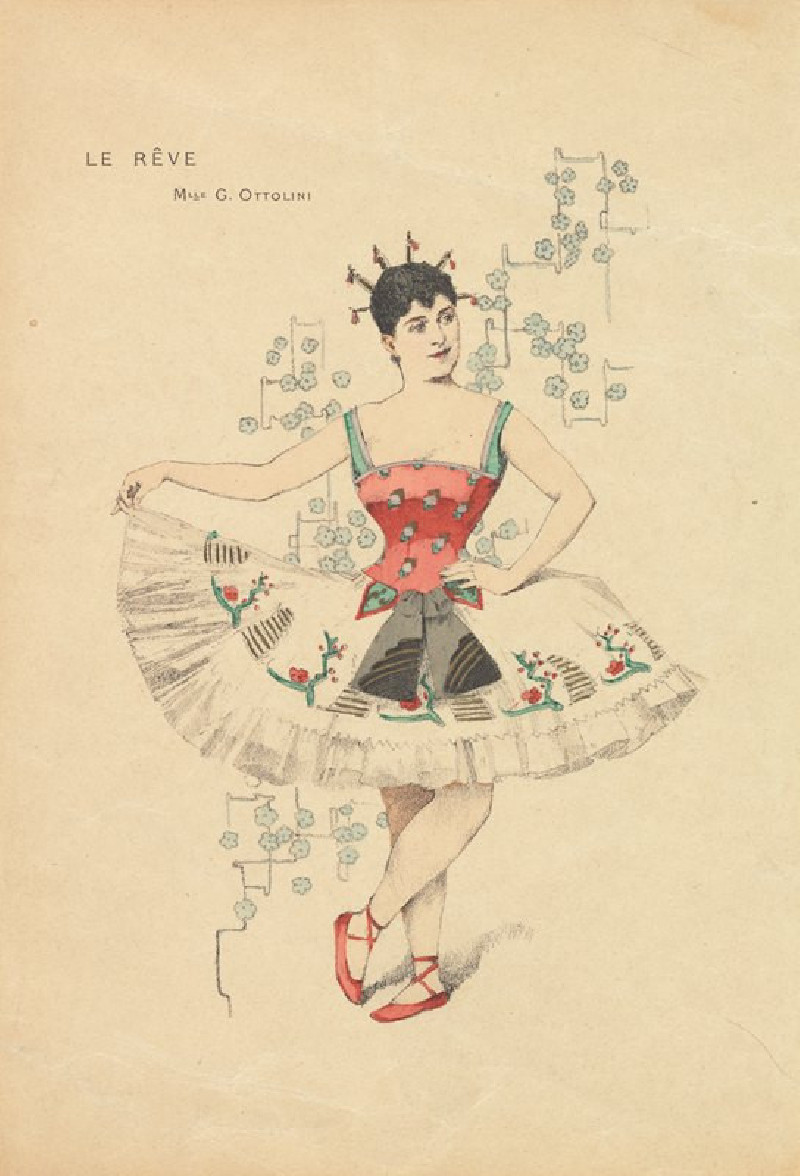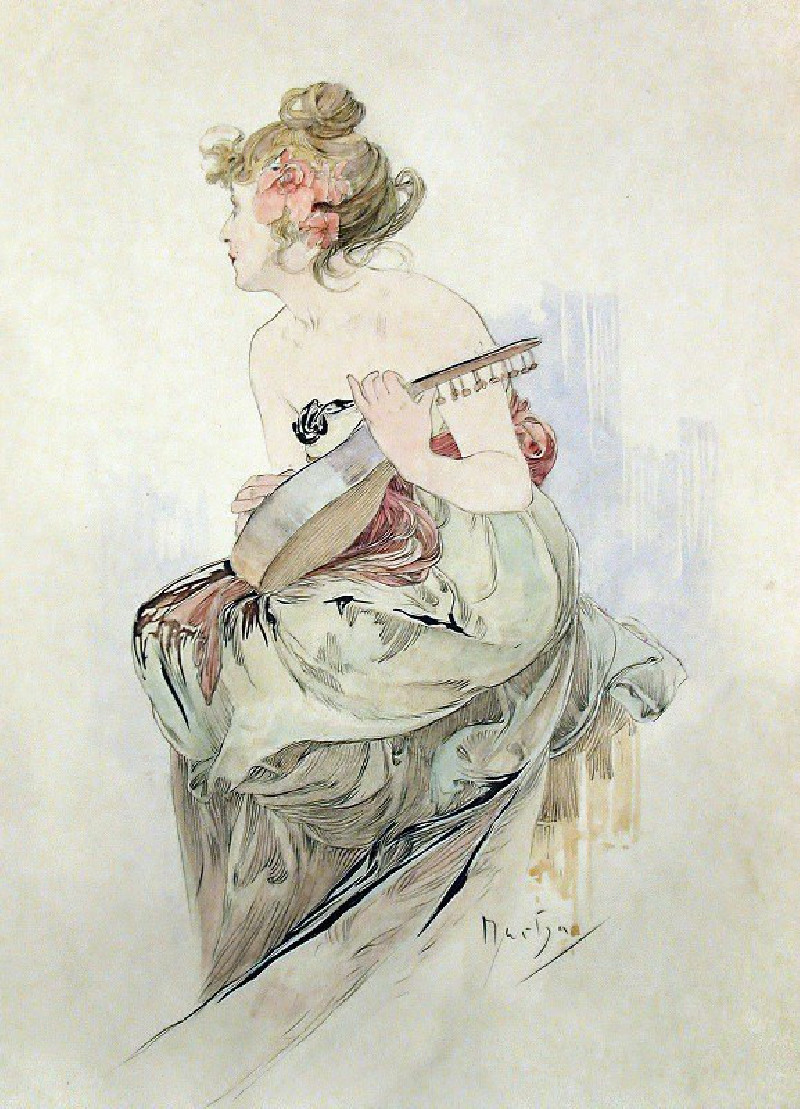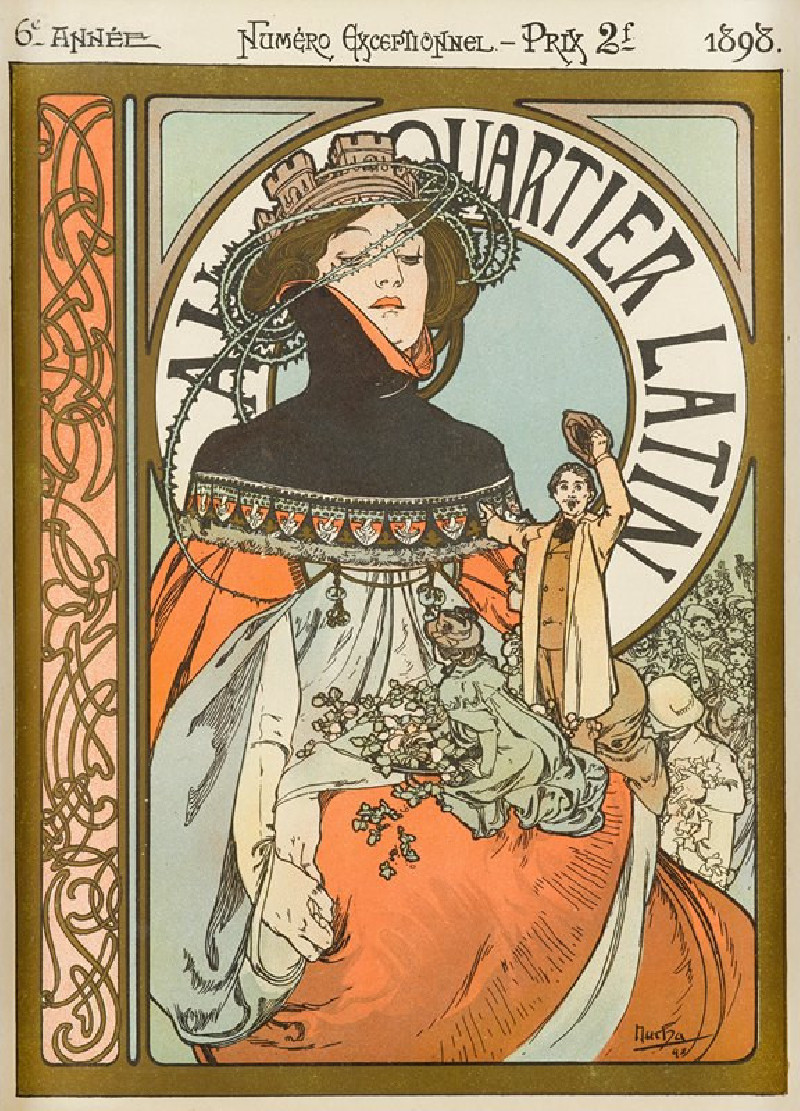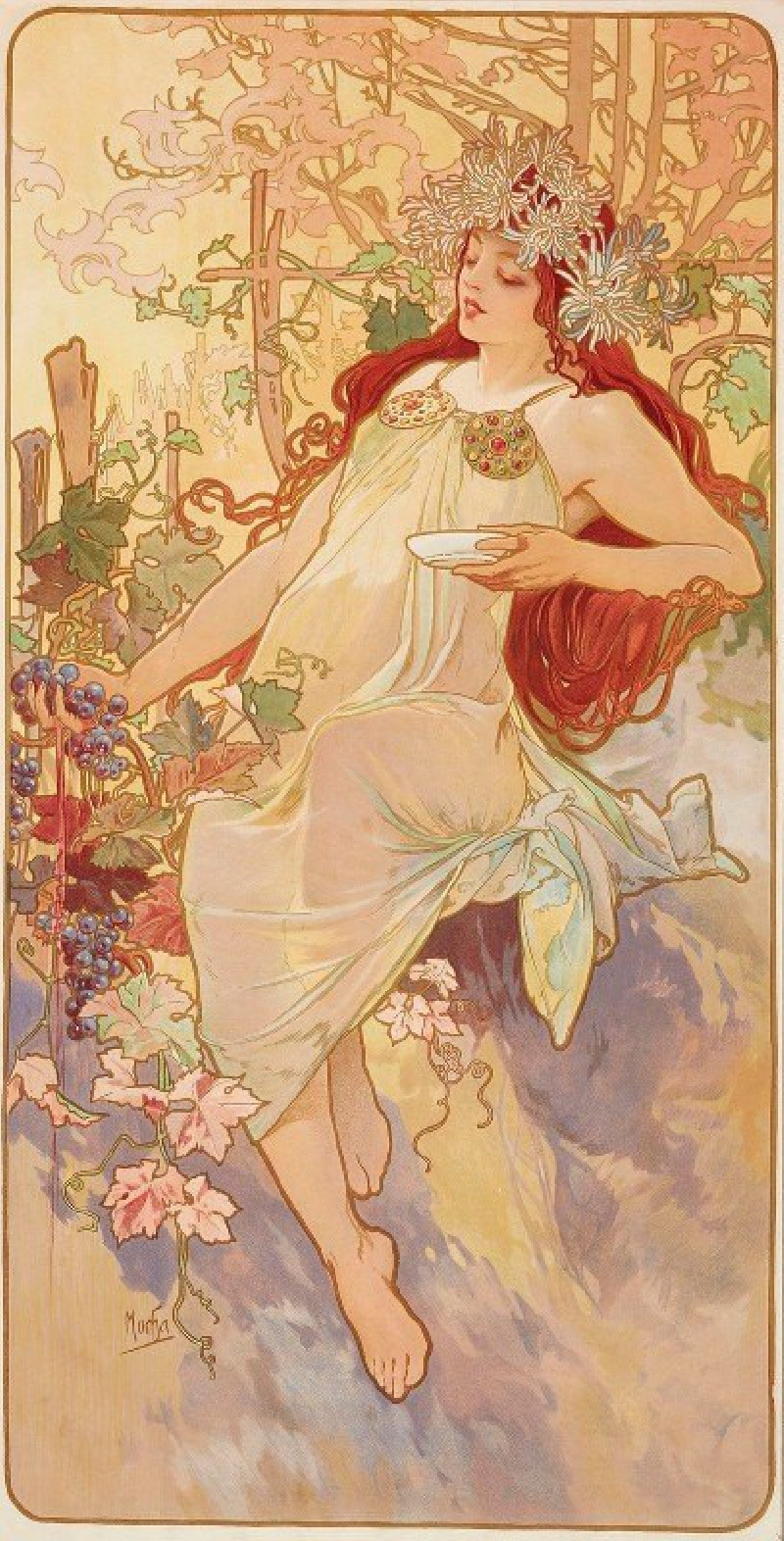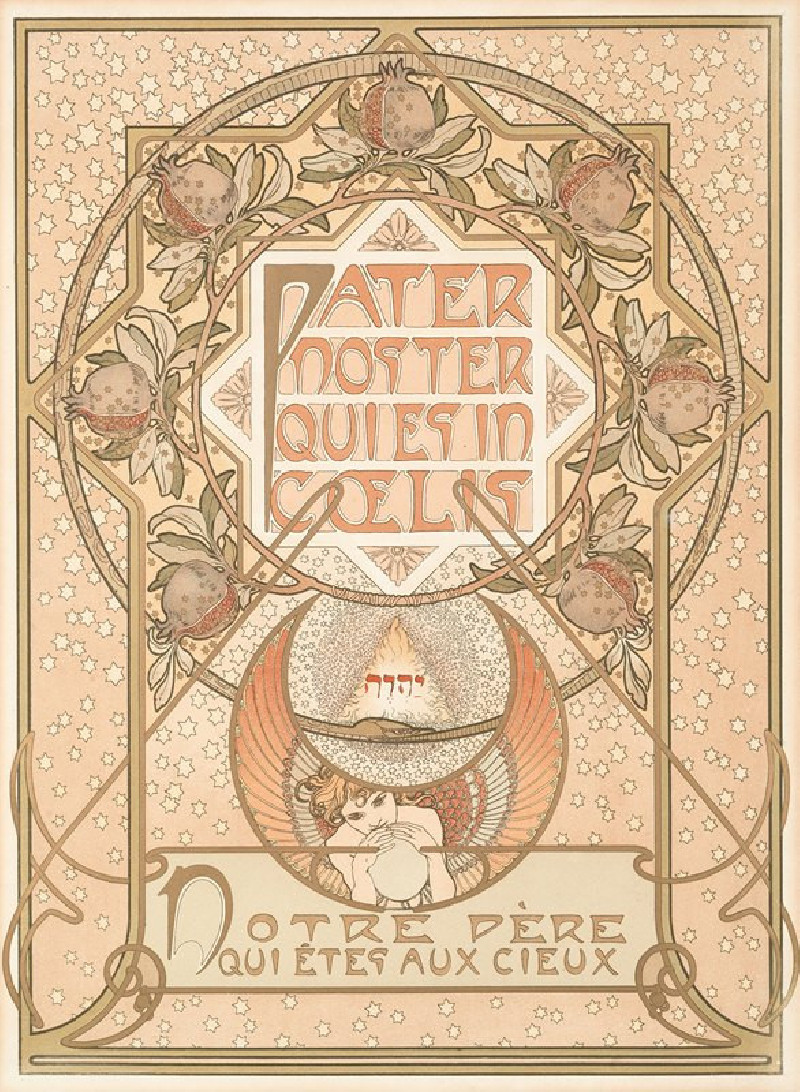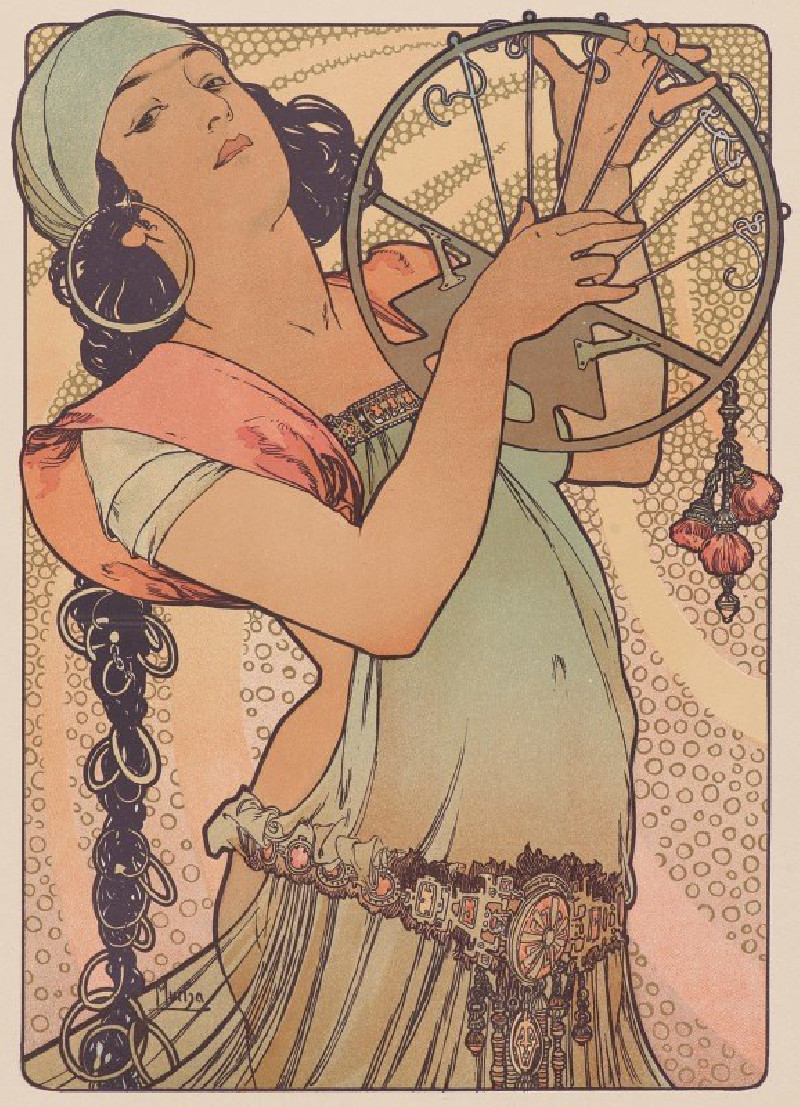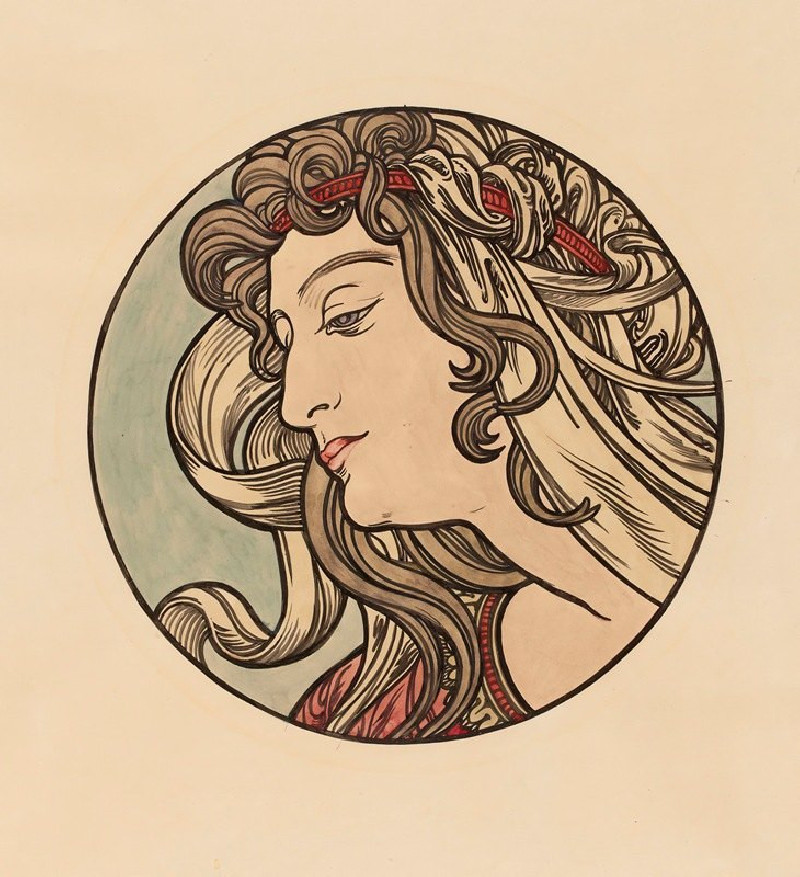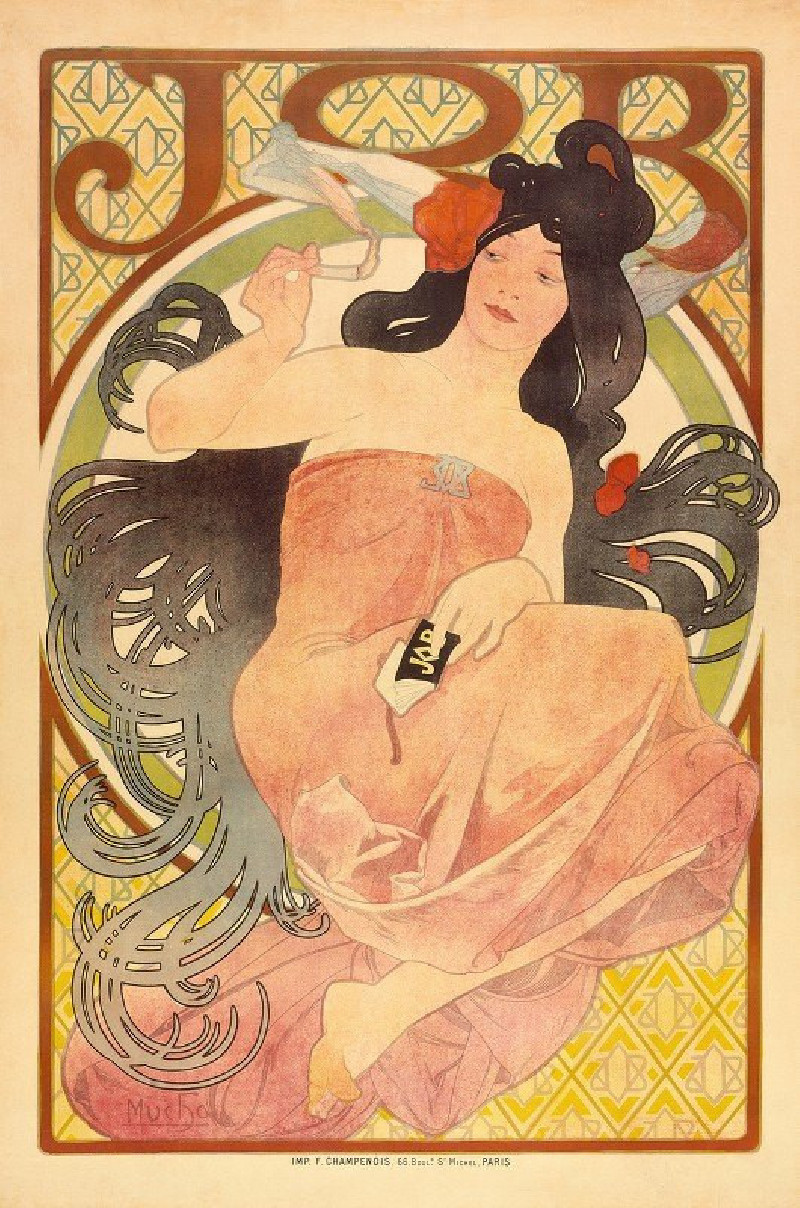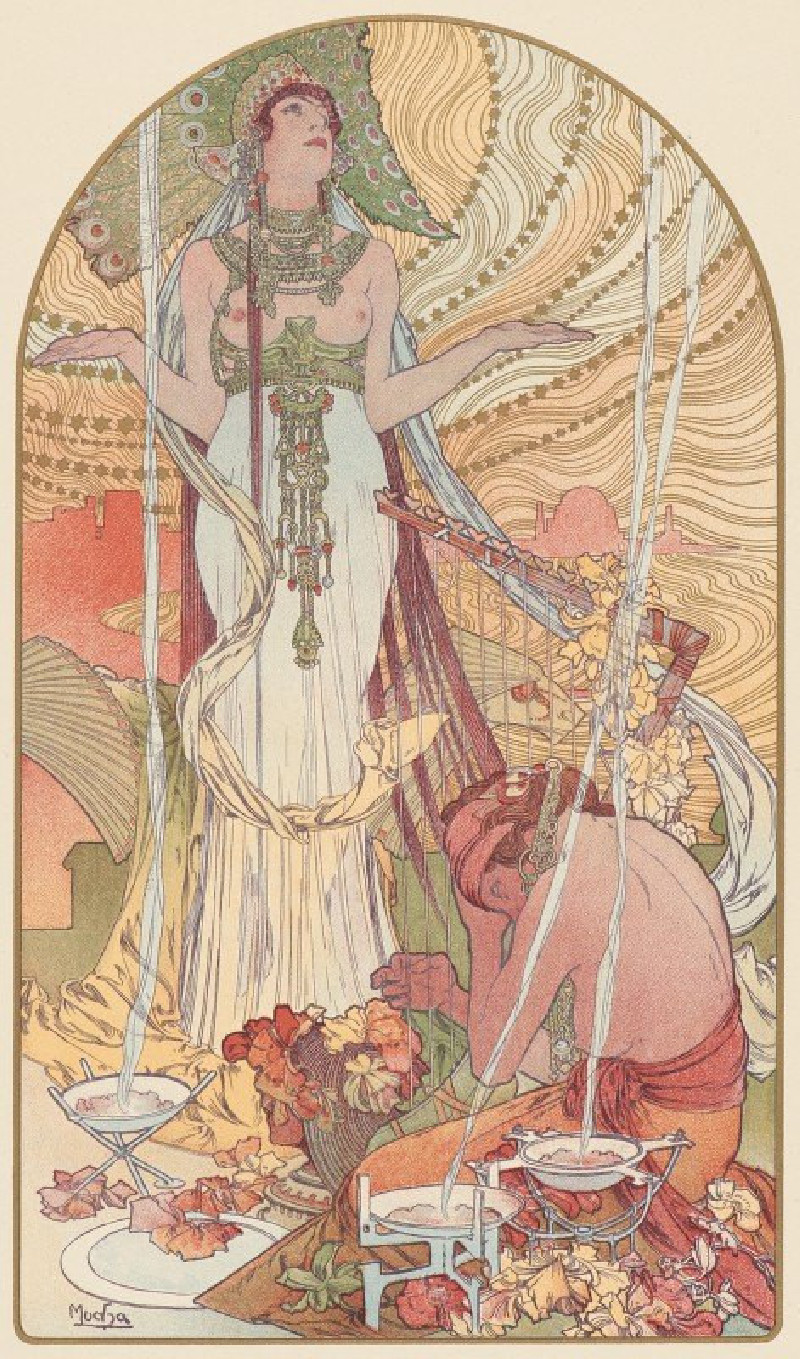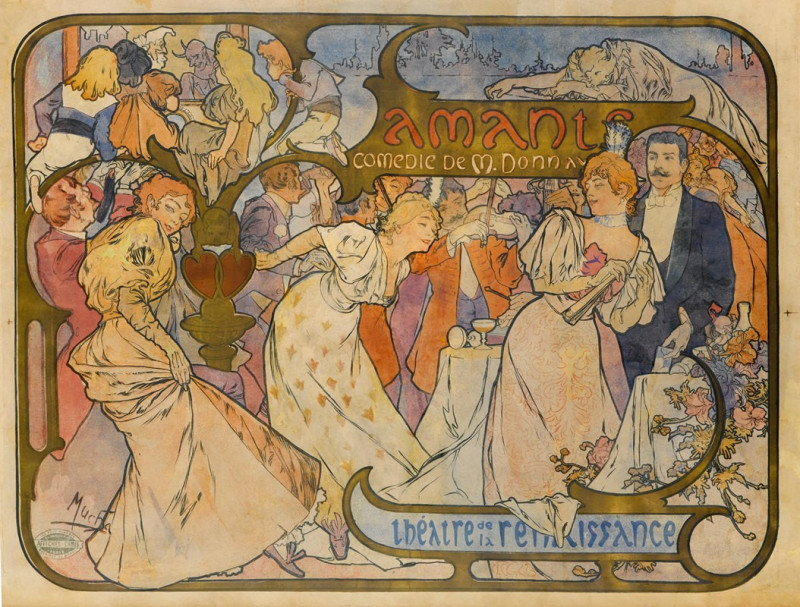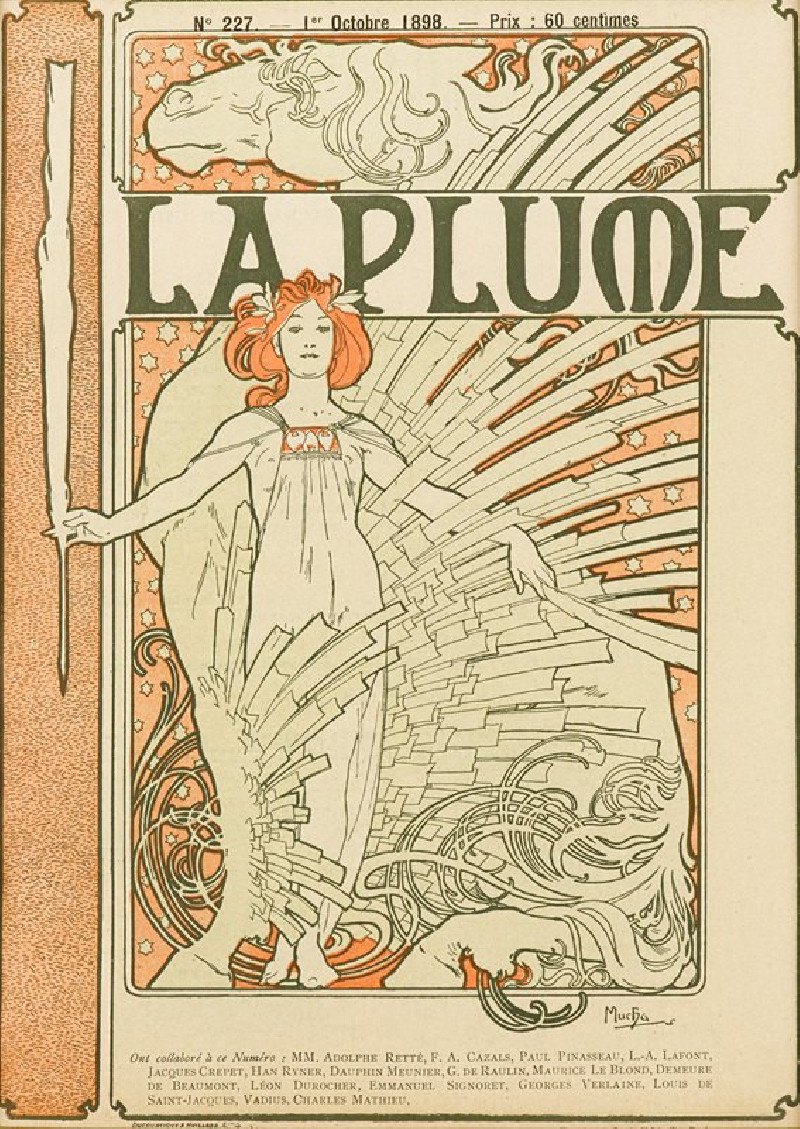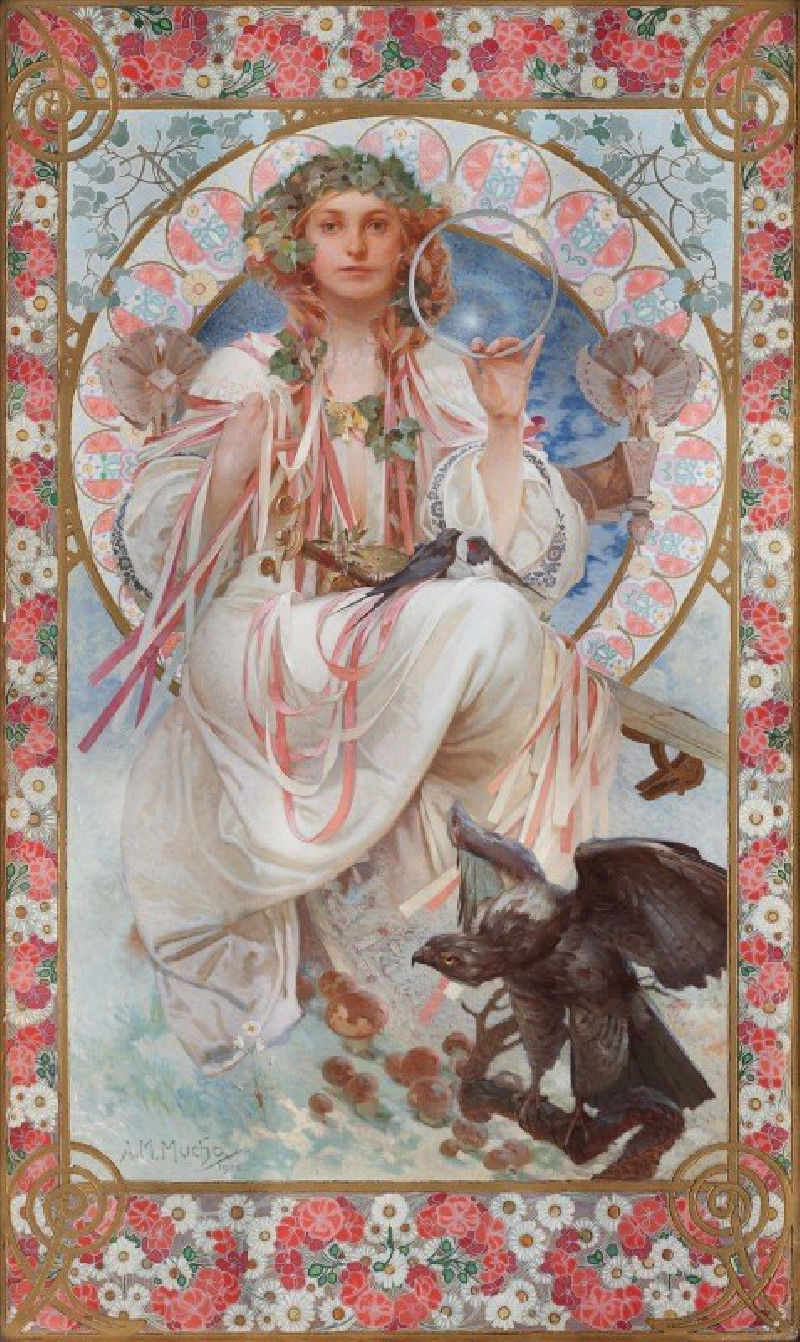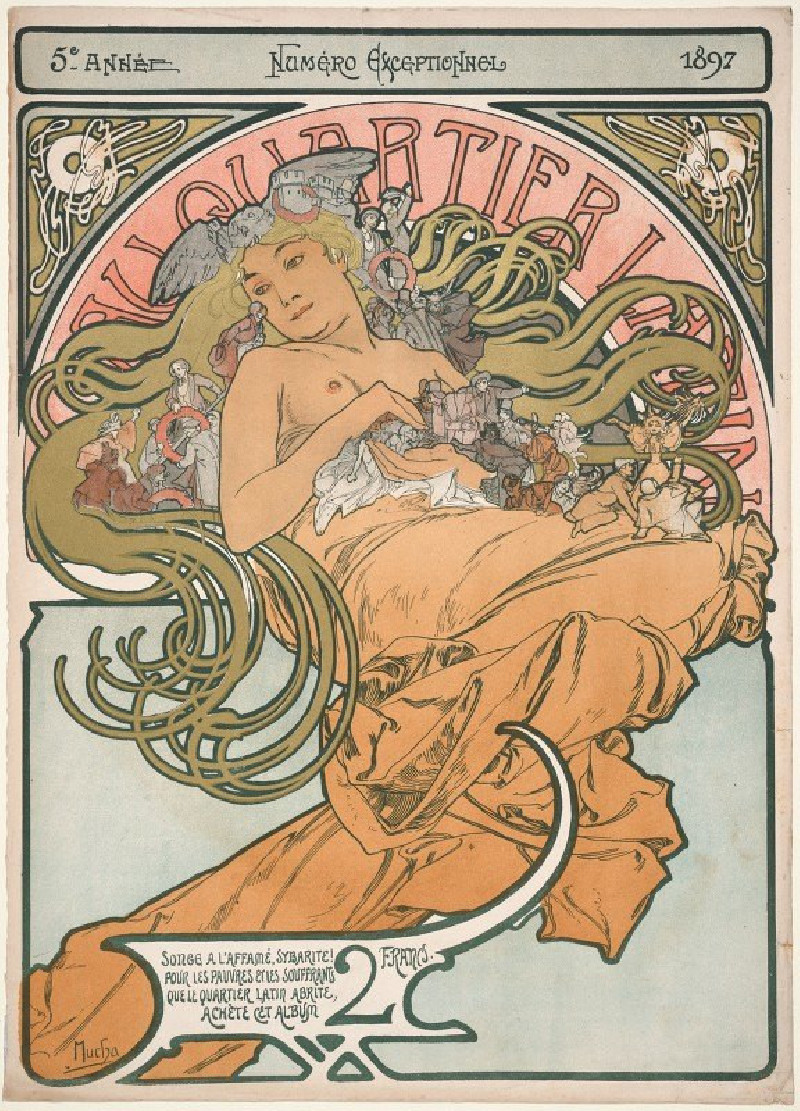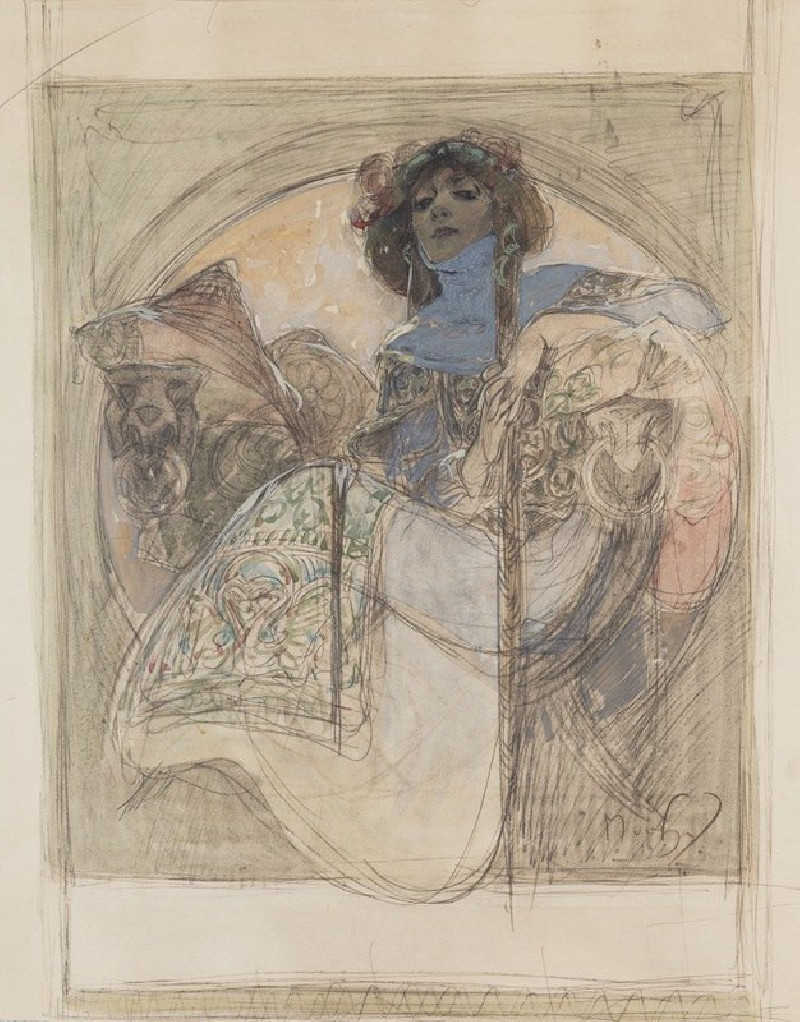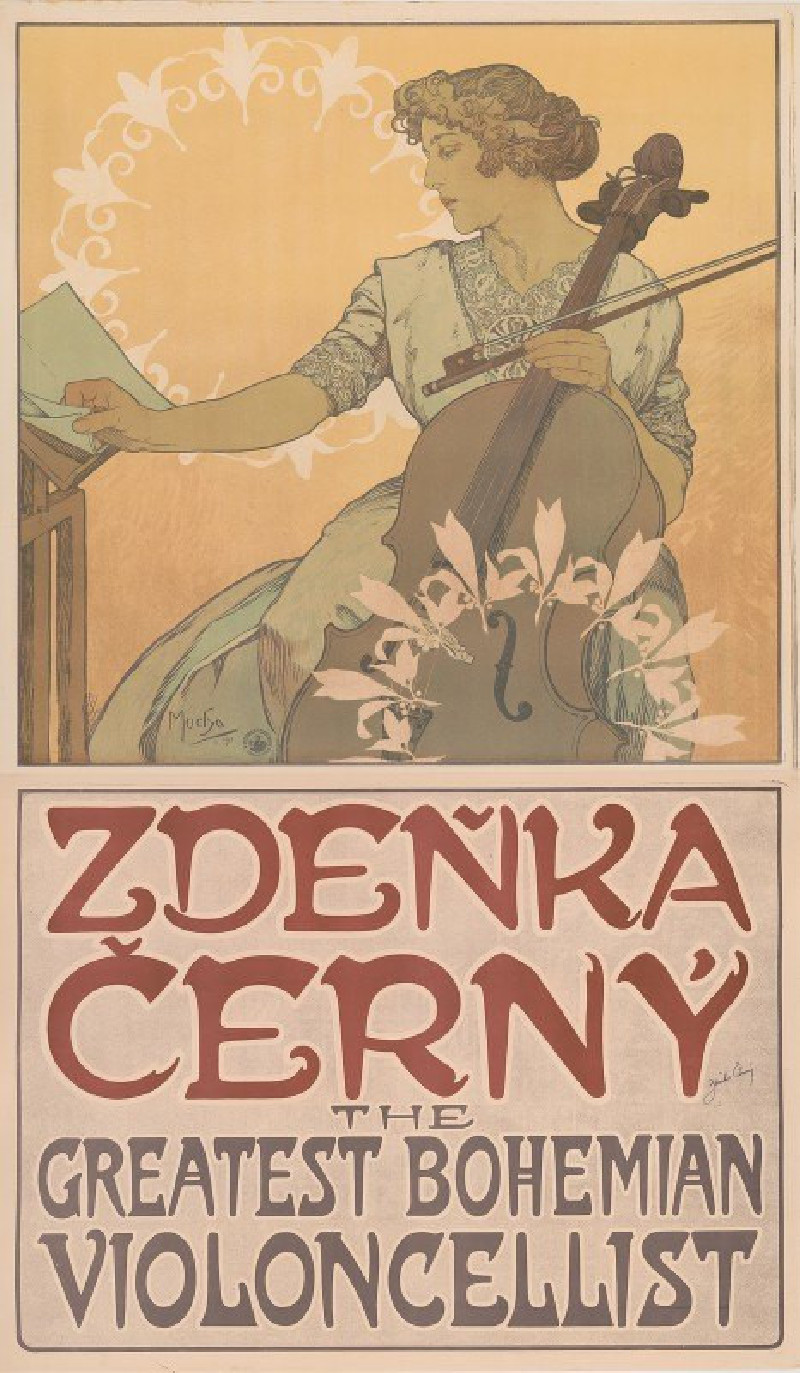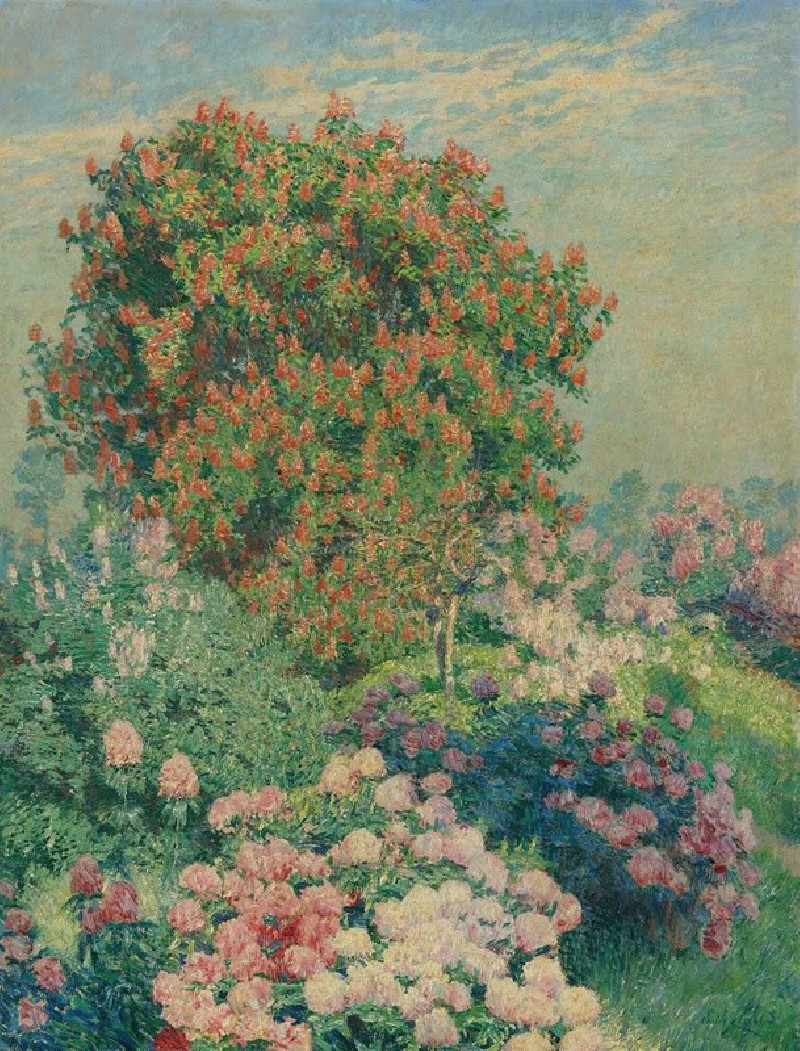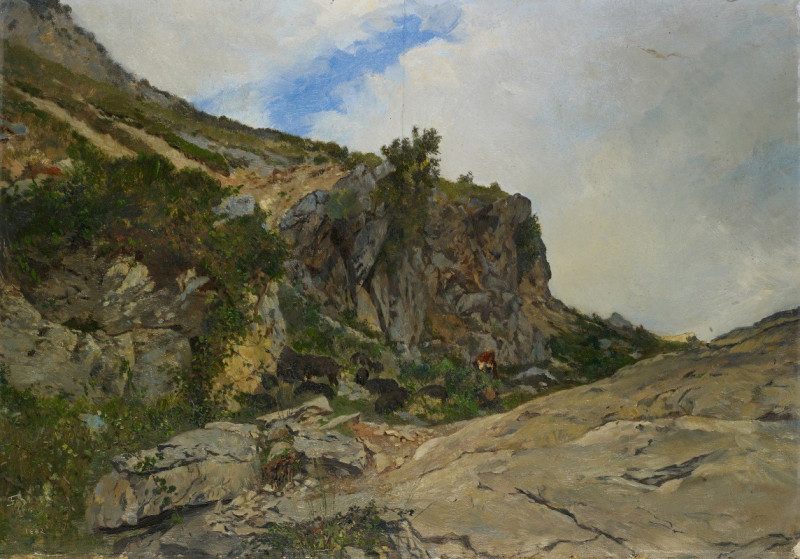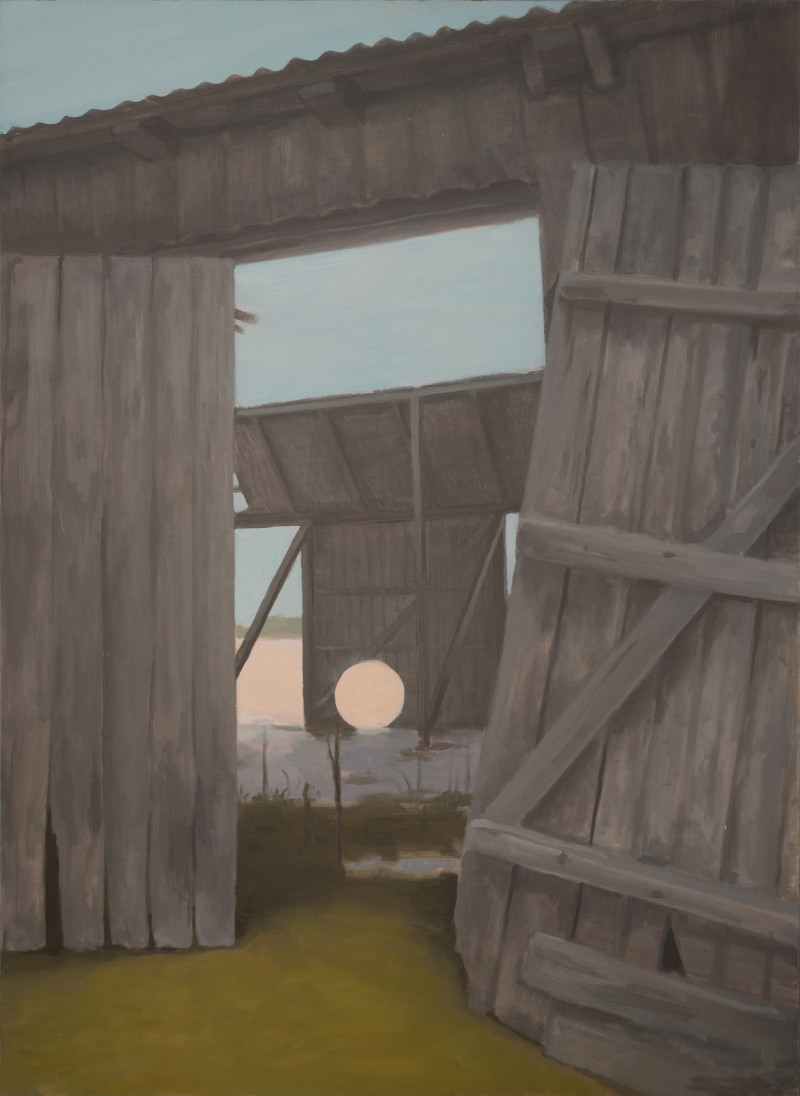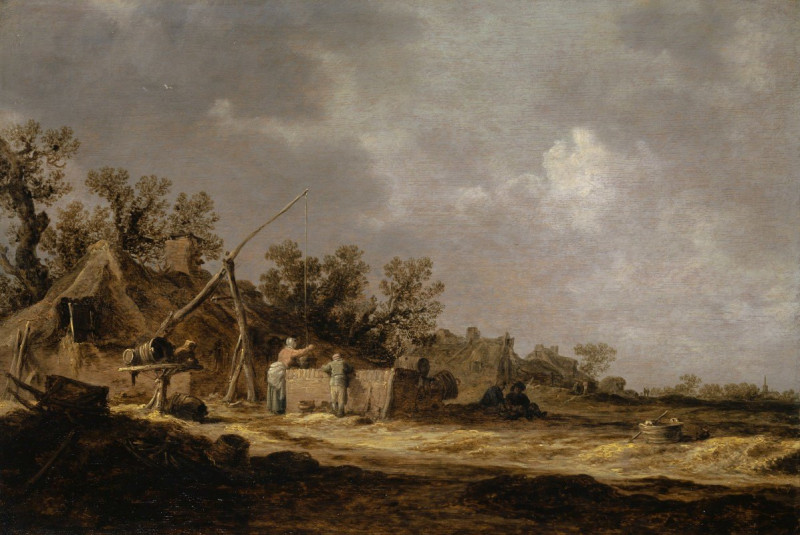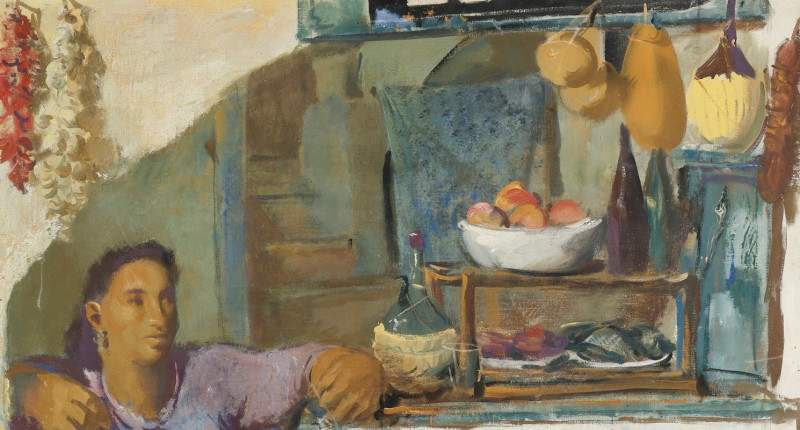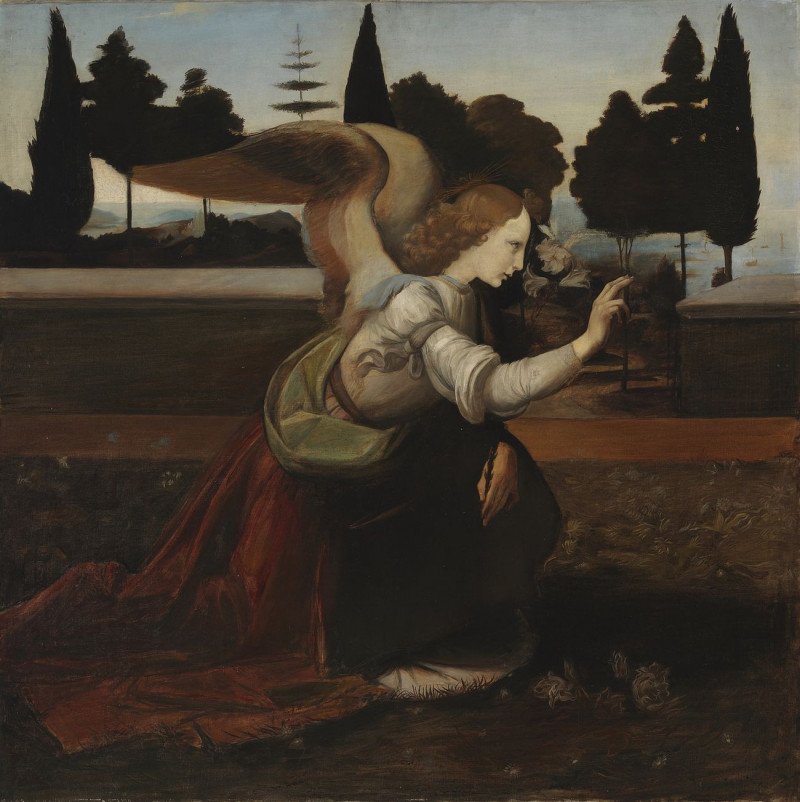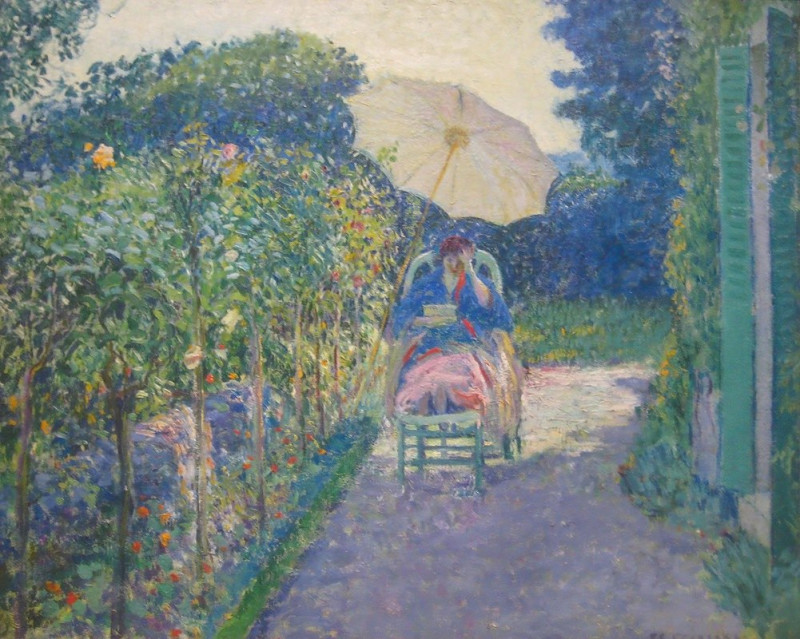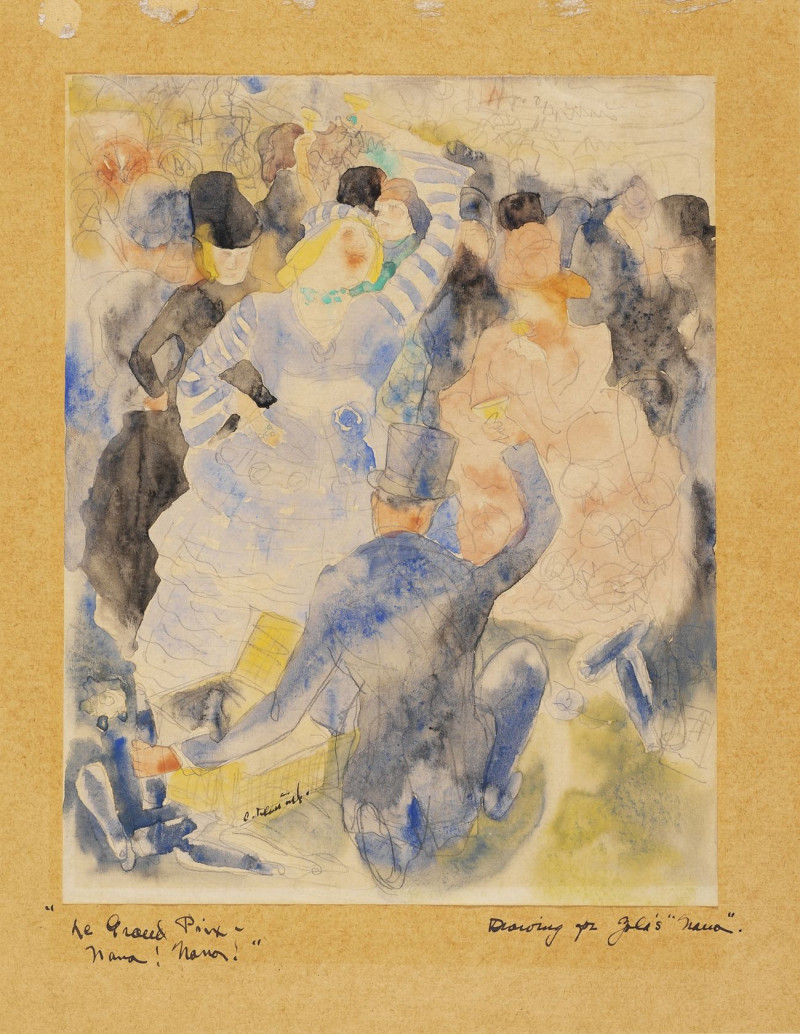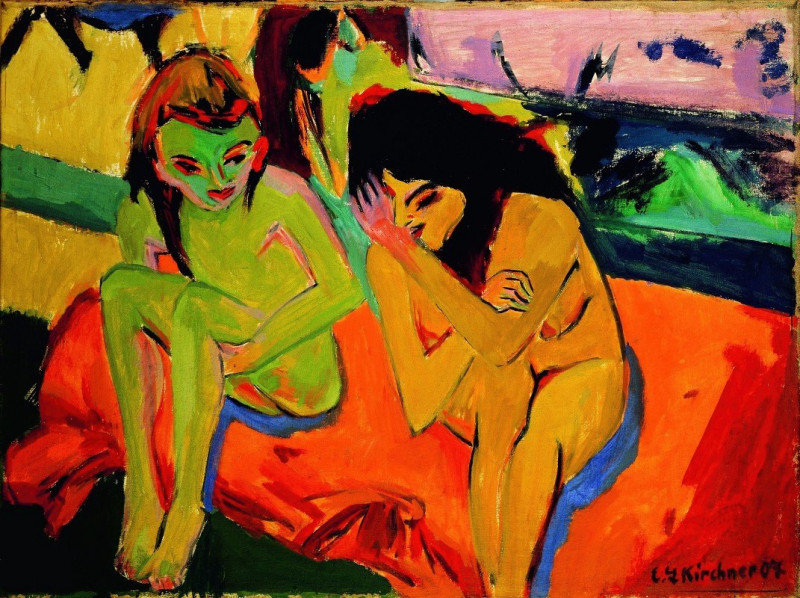Österreich auf der Weltausstellung Paris 1900 (1899)
Technique: Giclée quality print
Recommended by our customers
More about this artwork
The painting titled "Österreich auf der Weltausstellung Paris 1900" (Austria at the World Exhibition Paris 1900) created by Alphonse Mucha in 1899 is a vivid and compelling representation of Art Nouveau style. This work was intended to promote Austria's participation in the 1900 Paris Exposition.At the center of the composition is an elegantly dressed woman, styled in a way that's typical of Mucha's art. She wears a flowing gown with intricate details and decorative patterns that suggest a luxurious and refined aesthetic. Her posture is graceful, with her head slightly tilted as she supports a tray containing jewelry, reflecting Austria’s rich cultural heritage in arts and craftsmanship.The woman's attire and accessories, including the elaborate headpiece adorned with plumes and fabric, add to the decorative complexity that Mucha is renowned for. The use of soft pastel colors accompanied by the more dynamic tones of her robe enhances the ethereal and decorative quality of the image.Around the main figure, and separated by elaborate borders that incorporate organic, whiplashing lines typical of the Art Nouveau movement, are detailed illustrations of various Austrian landmarks and cultural symbols. These include iconic buildings like the "Wiener Restaurant" and other pavilions such as the "Ehrensaal", and representations of regions like Tirol and Steiermark.
Delivery
Returns
Alphonse Maria Mucha also know internationally as Alphonse Mucha (1860-1939), was a Czech graphic artist, painter and illustrator. He lived in Paris during the Art Nouveau period, and is best know for his noticeably stylized and decorative theatrical posters like those of Sarah Bernhardt, the most famous actress in paris at the time. Mucha produced paintings, advertisements, book illustrations as well as designs for carpets, jewelry and theatre sets, in what was called the Mucha style. His works featured beautiful young women in neoclassical robes surrounded by flowers which formed as haloes.


